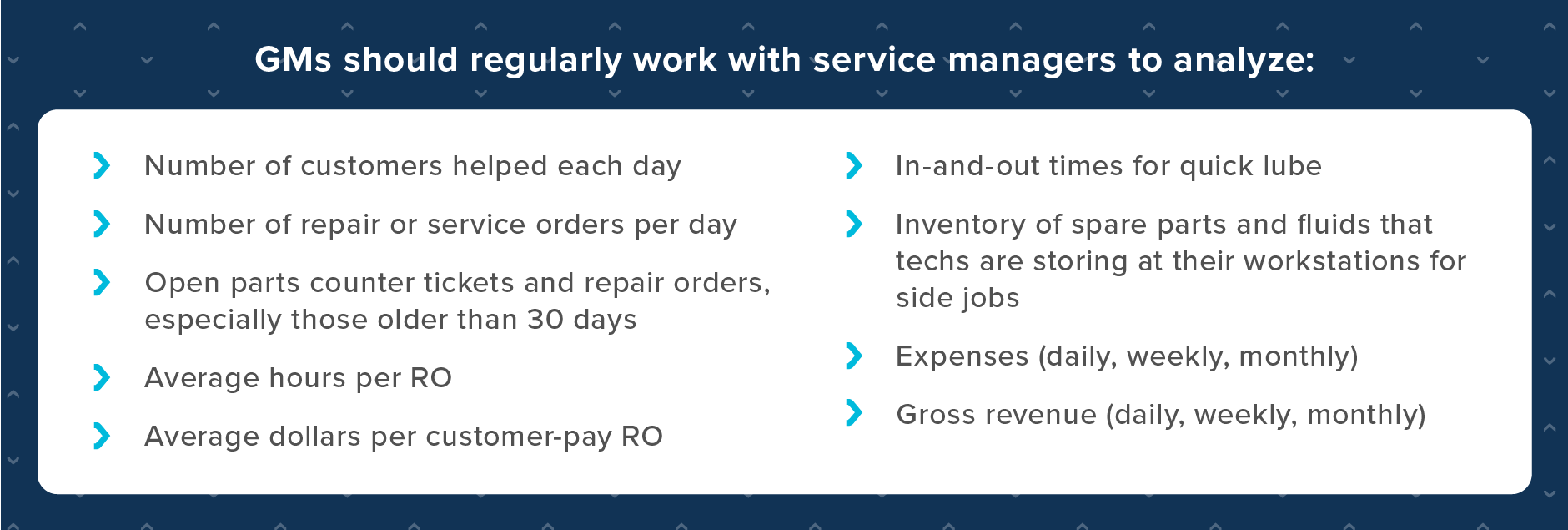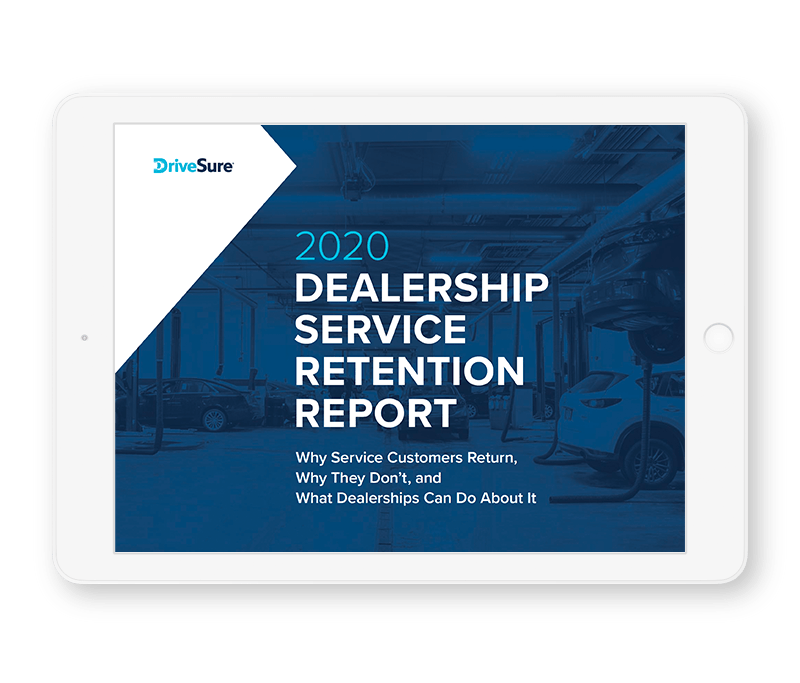From hiring and training department heads to monitoring the daily operating control (DOC) to annual forecasting, resolving elevated customer complaints, and so much more —dealership general managers (GMs) have a bevy of responsibilities.
And while the most successful GMs have a well-rounded and diverse set of skills, many of them share a common element: they’re personable salespeople at heart.
Make no mistake — that experience is invaluable when it comes to motivating the sales team and helping to close deals on the lot and showroom floor. But by leaning too heavily on their sales background, some GMs neglect (or at least overlook) the importance of their dealership service departments, even if unintentionally.
When GMs place too much attention on vehicle sales, it’s inevitable that the parts and service department takes a backseat to dealership operations.
In this article, we’ll tell you why it’s important to strike a balance between sales and service, and share some tips to help you lead a more well-rounded dealership.
Are You Maximizing Your Fixed Ops Profits?
The parts and service departments play a big role in driving the success of dealerships.
According to the National Automotive Dealers Association (NADA), fixed ops accounts for an annual average of 12 percent of a dealership’s revenue, 60 percent of a dealership’s net profits, and approximately half of the gross profits. When you look at how profitable each department is on its own – those numbers make a lot of sense.

Clearly, dealerships’ financial success depends on parts and service departments to deliver results.
Service, Parts, Sales: It’s All Connected
Fixed operations can help cover dealership costs, making the process of selling cars easier.
Your service department is important to not only ratcheting up fixed ops profits, but also generating future new car sales. Instead of a singular focus on vehicle sales, give your fixed ops department the attention it needs to be successful — by making sure everyone is on the same page to cross-sell services.
When dealerships intentionally cross-sell services, everybody wins.
The first major step is making sure your salespeople are doing everything they can to get a buyer to return to the dealership for their first service visit. We dive into the sales-to-service handoff in this article, but key components include training your sales staff and making adjustments to your sales commissions program. Both of these require support and direction from the GM level.
Parts and service departments must also be in constant communication, and GMs can help ensure a successful relationship between the two. Carefully work together to regularly review stocking levels on parts. The longer a customer has to wait for a repair, or if common parts need to be ordered leading to longer resolution times, the more frustrated they become.
According to a recent DriveSure Report, tires are another area that represent a substantial growth opportunity for dealerships. Less than a third of survey respondents reported purchasing a set of tires from their dealership. Even among customers who identified as extremely loyal to their servicing dealership, only half of them buy tires there.
This is a clear indicator that many dealerships are leaving money on the table. Not only are they losing tire sales to a competitor, they’re losing an opportunity to upsell or cross-sell and may be missing out on repeat business altogether.
If you’re not keeping a keen eye on how your parts and service departments collaborate — maintaining a well-trained staff and in-demand parts fully stocked — you run the risk of losing a customer’s business for good.
This may sound simple, but these are the things typically overlooked by GMs who aren’t as invested as they should be in the fixed ops side of the business.
Adopt a “Service Sales” Department Mindset
Sometimes it just takes a change in how you view your service department. Far more than just parts and service, consider them your “service sales department.”
Instead of looking at fixed ops as a cost-center where expenses should be cut, treat them like a sales department. In doing so, you’ll be far more likely to use your sales experience to employ the leadership tactics that transform fixed ops into the profit-generating machine it should be.
This can be done with a regular sales meeting with your service advisors and managers to review performance standards, revenue goals, forecasting, and customer retention. Some things to include with each meeting agenda include:

This regular and open communication will show you’re invested in your team and allow you to better lead from a position of knowledge and trust. It also helps you immediately identify opportunities and address issues. And perhaps most importantly, it fosters a sense of camaraderie and empowerment among your fixed ops employees.
The Most Important Fixed Ops Metric
Once you’ve made the intentional decision to focus on fixed ops — generating greater collaboration between departments and adopting a service sales mindset — you’ll find that there’s one key metric driving profitability across the entire dealership: retention.
Getting vehicle buyers to come back for service means more parts and service revenue. Keeping service customers as their vehicles age results in larger and more frequent repair orders. Consistently delighting service customers gets them to come back to you for their next vehicle purchase. It’s all about retention.
There are many ways to help you retain more customers. Using DriveSure is one method with clear results. By providing customers with a unique set of benefits with every oil change and vehicle sale, DriveSure helps you keep customers coming back for service, tires, and unplanned repairs — all without complicated loyalty programs or profit-cutting discounts.
The 2020 Dealership Service Retention Report
INSIGHTS FROM NEARLY 2,000 DEALERSHIP CUSTOMERS
Learn why customers choose to return to their dealership for service and why they don’t. Plus, we reveal your biggest opportunities for encouraging customer loyalty.



